A short interview with Celine Loozen from ‘France Culture’ radio station within a radio program concerning AI and GAFAM ethics.
Link for the full radio broadcast
Interview with Celine Loozen : here (local version if necessary here)
personal page
A short interview with Celine Loozen from ‘France Culture’ radio station within a radio program concerning AI and GAFAM ethics.
Link for the full radio broadcast
Interview with Celine Loozen : here (local version if necessary here)
Instructor: Gabriel TURINICI
1/ Introduction to reinforcement learning
2/ Theoretical formalism: Markov decision processes (MDP), value function ( Belman and Hamilton- Jacobi – Bellman equations) etc.
3/ Common strategies, building from the example of « multi-armed bandit »
4/ Strategies in deep learning: Q-learning and DQN
5/ Strategies in deep learning: SARSA and variants
6/ Strategies in deep learning: Actor-Critic and variants
7/ During the course: various Python and gym/gymnasium implementations
8/ Perspectives.
Multi Armed Bandit codes (MAB) : play MAB, solve MAB , solve MAB v2., policy grad from chatGPT to correct., policy grad corrected.
Bellman iterations: code to correct here, solution code here
Gym: play Frozen Lake (v2023) (version 2022)
Q-Learning : with Frozen Lake, python version or notebook version
-play with gym/Atari-Breakout: python version or notebook version
Deep Q Learning (DQN) : Learn with gym/Atari-Breakout: notebook 2024 and its version with smaller NN and play with result
Policy gradients on Pong adapted from Karpathy python or notebook
You can also load from HERE a converged version (rename as necessary) pg_pong_converged_turinici24
Notebook to use it: here (please send me yours if mean reward above 15!).
version 2023 : python or notebook Old version (2022): python or notebook
Projets : cf. Teams
Responsable: Gabriel TURINICI
Contenu
Note historique: nom du cours 2019/21: « Approches déterministes et stochastiques pour la valuation d’options »
Responsable de cours: Gabriel TURINICI
Contenu:
1 Introduction
2 EDO
3 Calcul de dérivée et contrôle
4 EDS
Bibliographie: poly distribué
Supports de cours: ![]() livre « Simulations numériques des problèmes dépendant du temps: appliquées à l’épidémiologie, l’intelligence artificielle et les finances«
livre « Simulations numériques des problèmes dépendant du temps: appliquées à l’épidémiologie, l’intelligence artificielle et les finances«
Seances de TD: 2022/23
Implementations TP:
 visioner ICI , ensuite revenir sur la séance Teams pour commentaires et questions.; video Youtube chapitre 1 (motivation/backward) :
visioner ICI , ensuite revenir sur la séance Teams pour commentaires et questions.; video Youtube chapitre 1 (motivation/backward) : visioner ICI , ensuite revenir sur la séance Teams pour commentaires et questions.
visioner ICI , ensuite revenir sur la séance Teams pour commentaires et questions. visioner ICI
visioner ICIIntervention at the round table « AI and medias: when everything is accelerating » at the Dauphine Digital Days held Nov 20-22 2023 at the Université Paris Dauphine – PSL, Paris, France.
Video version: from minute 09:00
Conference badge 🙂 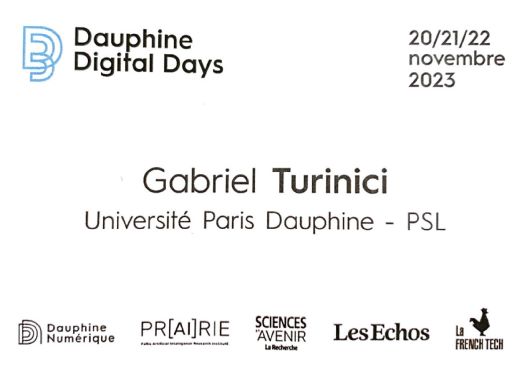
This is a talk presented at Nanmath conference held Nov 6-9 2023 at ICTP, Cluj..
Talk materials: ![]() the slides of the presentation.
the slides of the presentation.
Responsable: Gabriel TURINICI (voir aussi les interventions de C. Vincent)
Contenu:
1/ Deep learning : applications majeures, références, culture
2/ Types d’approches: supervisé, renforcement, non-supervisé
3/ Réseaux neuronaux: présentation des objets: neurones, opérations, fonction loss, optimisation, architecture
4/ Algorithmes d’optimisation stochastique et preuve de convergence de SGD
5/ Calcul du gradient par « back-propagation »
6/ Implémentation en “pure Python” d’un réseau à couches denses
7/ Réseaux convolutifs (CNN) : filtres, couches, architectures.
8/ Implémentation Keras d’un CNN.
9/ Techniques: régularisation, hyperparamètres, réseaux particuliers: réseaux récurrents (RNN) et LSTM;
10/ Deep learning non supervisé: réseaux génératifs et IA générative (GAN, VAE), Stable diffusion.
11/ Implémentation Keras d’un VAE. Utilisation “Hugginface” de Stable Diffusion.
(12/ Si le temps permet: LLM et NLP: word2vec and Glove: exemples d’utilisation : femme-homme+roi = reine)
| Documents de cours | ||
 Document PRINCIPAL pour les présentations théoriques Document PRINCIPAL pour les présentations théoriques(aucune distribution n’est autorisée sans accord ECRIT de l’auteur) |  poly du cours de M1 – évolution (pour back-propagation) poly du cours de M1 – évolution (pour back-propagation) | Preuve convergence SGD (convergence proof english version) |
| Implémentations |
| Code approximation de fonctions par NN : version notebook, version py Resultats (approximation et convergence) 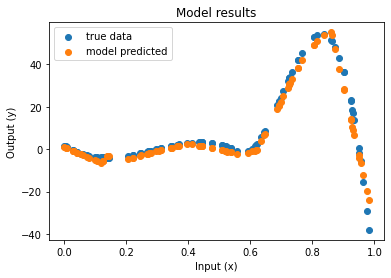 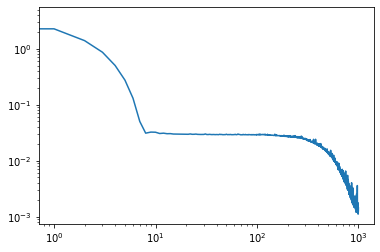 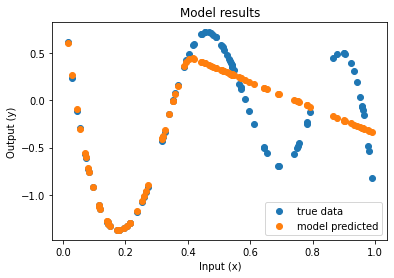 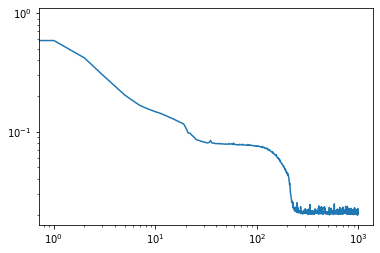 Le même après 5 fois plus d’époques 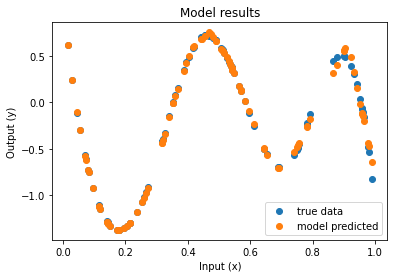 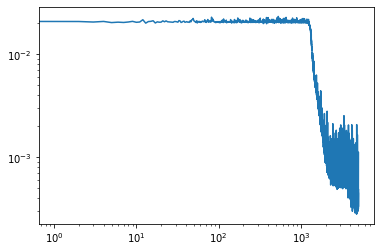 Référence « officielle » du code: https://doi.org/10.5281/zenodo.7220367 |
| Implementation keras/Iris Autres implémentations: exemple « à la main » A CORRIGER sans Keras ni tf ni pytorch : couches denses (bd=iris), version corrigée – autres implementations : cf. doc. Si besoin : le dataset Iris est ici |
| VAE: version avec visualisation espace latent: CVAE version python (renommer *.py) , CVAE version ipynb |
Stable diffusion: exemple qui marche le 19/1/2024 sur Google collab: version notebook, (ici la version python, changer le nom en *.py). ATTENTION l’exécution initiale prend autour de 10 minutes, ensuite c’est plus rapide (juste changer le prompt). |
Responsable: Gabriel TURINICI
Contenu Rappels du cadre classique: critère moyenne-variance, Markowitz, CAPM / MEDAF
En fonction du temps: introduction à l’allocation tactique à travers l’analyse et les indicateurs techniques
Bibliographie
 pour théorie de gestion de portefeuille pour théorie de gestion de portefeuille « actions » classique (proba historique) |  livre du cours de M1 Mouvement livre du cours de M1 MouvementBrownien et évaluation d’actifs dérivés |
Autres ressources pour le cours :
This is a talk presented at ACDSDE conference held Sept 28-30 2023 at the Romanian Academy (Iasi station), Octav Mayer Institute of mathematics.
Talk materials: ![]() the slides of the presentation.
the slides of the presentation.
This is a talk presented at OL2A: « International Conference on Optimization, Learning Algorithms and Applications 2023 », September, 27 – 29, 2023, Ponta Delgada (Portugal) 
Talk materials: ![]() the slides of the presentation.
the slides of the presentation.